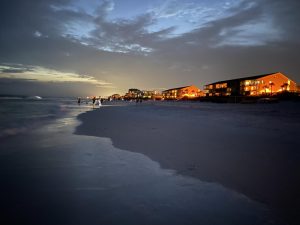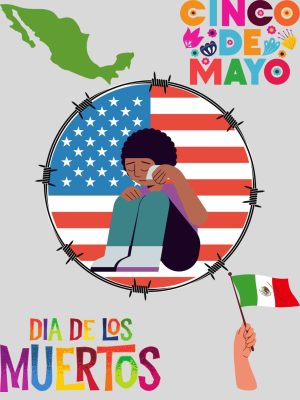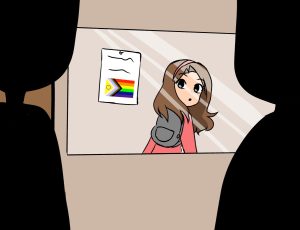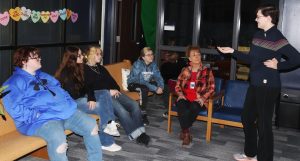Better education of administrators, community needed to avoid censorship
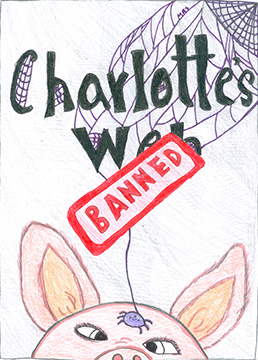
Censorship of books prohibits teacher creativity in the classroom and squashes students’ higher level thinking or learning life lessons from history.
February 7, 2020
Twenty years ago, an English teacher was told by the vice-principal not to teach the novel Into the Wild by Jon Krakauer which shared Chris McCandless’ tragic story in the January 1993 issue of Outside magazine and later in his bestselling book which inspired an award-winning film of the same name. The reasons given were that the novel contains inappropriate language and subject matter since the main character rebelled against his parents and took off on a journey that resulted in his own death. This is censorship rearing its ugly head.
Books should not be censored for high school libraries or classrooms as removing books from libraries and curriculums affects students, teachers, and future author’s negatively. When administrators keep students from reading about certain topics, it doesn’t allow the students to think for themselves. When a book is based in a time period of racism, sexism, heavy drug use, abuse, etc… then the words, customs, and actions of the people in that time will be presented. This may include derogatory slurs, hate speech, or hate crimes, but if it is historically accurate, then it is simply telling what happened and not pressuring students to think in a certain way. Most books teach a life lesson, but in the end, it should be the students’ decision on what their opinion of the topic is. Books about teenage rebellion, child abuse, mental health, or suicide can assist students when or if they are in a similar situation in life. Learning of all of the possible perspectives of a topic will help students to grow into an adult who can empathize with others, avoid being ignorant, and make good life choices, but they can’t do this if they are sheltered by the administration.
Nowadays, careful planning and consideration goes into the selection of their reading and reference materials. Every public school district in the state of Texas enforces their own unique set of rules and regulations regarding the variety of accessible literature and curriculum. The School Administration with the input of teachers and librarians review and approve said materials by reviewing the standards of the community; however, the approval process can be the first step of censorship and can result a book being banned.
By definition, censorship is the suppression of any parts of books, films, news, etc. that are considered obscene, politically unacceptable, or a threat to security. According to the National Coalition Against Censorship, NCAC, almost 70% of censorship targets the material in school classrooms or libraries. The reasons for this censorship range anywhere from materials that are believed to be sexual explicit or contain offensive language, to materials that are thought to promote homosexuality, contain racism, nudity, or express anti family sentiments. Administrators and teachers must recurrently meet to decide on what curriculum will be taught, by making a conscious effort to respect their communities guidelines, beliefs, and goals. Censorship comes when those who control what is taught, said, written, shown etc… exile a specific topic or subject in order to suppress certain ideologies or conceal the perspectives that don’t align with what they see as for the common good. Failing to see the difference between selection and censorship can make every person who doesn’t approve curriculum seem like a bad person.
Selection is choosing books and curriculum based on things like the prior knowledge of the students. If a teacher pulls To Kill a Mockingbird by Harper Lee, from the class’s curriculum because the students don’t know very much about the history of racism, then this is an example of selection, but if it is pulled because of its use of racial slurs, this is an example of censorship. Librarians ,when selecting books, will think about what a level headed adult or student will think of the content in the book. Censorship is controlling what you can think or say, but selection is giving you the right to read with taking into consideration your educational status.
There are many different types of censorship, but the most common type is the challenging or banning of books. The challenge of a book is when a person or group objects with what is within a book and requests to remove it. The Banning of a book is the removal of that book from the classroom, library etc. According to the American Library Association, ALA, over 11,300 books have been banned since 1982.
With this being said, most of the cases of removal or banning are made by the pressure of the students’ parents. Some of the books that have been banned are The Catcher in the Rye by J.D. Salinger, To Kill a Mockingbird by Harper Lee, Adventures of Huckleberry Finn by Mark Twain, and even Charlotte’s Web by E.B White. The reasons for their banning, in order, are references to premarital sex and prostitution, racially insensitive topics, usage of the racial slurs, and blasphemous and unnatural actions such as talking animals.
When teachers aren’t allowed to teach the topics they want or with the books they want, it can not only negatively affect the relationship between administration and teachers, but it also narrows their road of accessible teaching material. When a lesson is taught to someone, there can’t be any limitations on what they can say or think. This is taking away their creativity and keeps teachers from exploring different ways to reach the students on an emotional and educational level. Without this connection, there will be nothing to help the lesson stick in the student’s mind.
All authors are aware that anything that they publish could be challenged or banned, and this sets fear into new writers. Of course authors want people to read their books, articles, magazines, etc. , but with all of the possible reasons that a book could be banned, they will start to censor their ideas before they are even on paper. Freedom to publish means that any writer can publish what they see as publishable. Any author being able to publish whatever he wants saying whatever he wants, is an act of freedom of speech, but those who request the removal of their works also have the right to say whatever they want about the book, but they cannot try to remove or silence the authors first amendment rights. These writers shouldn’t have to second guess themselves or over look what they want to do simply because others don’t agree with what they write.
Parents claim that they have the right to control what their children can and can’t read, and that is true, but they shouldn’t be allowed to decide what every other student is able to read. When a parent makes a complaint about a book and it results in the book being taken off
the shelf, that isn’t fair to all of the children who may have wanted to read that book. Selection of books by administrations, should be done with professional judgement and made in consideration of the community’s standards and morals–not to please individual preferences.
Administrators, teachers, students, parents, authors, and publishers need to better educate themselves on the specific guidelines of their community. This is how the process works: an author writes a book, the publisher selects what it believes will sell and publishes it. Then the librarian buys the book, students read it and parents file a complaint or try to challenge the book, which in return could make publishers not want to publish those types of books. If the publishers won’t approve those types of books, then the authors will stop writing them. If the authors stop writing them, then the librarians can’t buy them and students can’t read them. It is a circular process of buying, distribution, and censorship. All of the producers in this process make an effort to follow their community’s guidelines, which are different from city to city or county to county. When a parent who is uneducated on the beliefs of their community, tries to challenge a book that doesn’t go against said beliefs, it is at that point a waste of time and energy. Administrators need to become better educated about the historical significance of books that teach, and they need to be better educated on what exactly are the moral and ethical standards of their community as a whole. In this way, administrators will be ready to defend the teacher’s choice of literature taught in the classroom.
Censorship of books should not be allowed because it doesn’t allow students to think for themselves or to learn from history. It takes passion for teaching and freedom of choice away from teachers, and forces authors to modify or throw out their ideas before they are even written down. Censorship and selection are different because selection is a decision that gives you the right to read, and censorship is tyranny of the mind. Parents have the right to what is accessible for their child, but not what is accessible for all children. Everyone involved in the decision making, distribution, buying, writing, and reading of books needs to be more educated on what is seen as acceptable in the specific city or county they live in. Censorship of books in high school affects everyone involved negatively.



